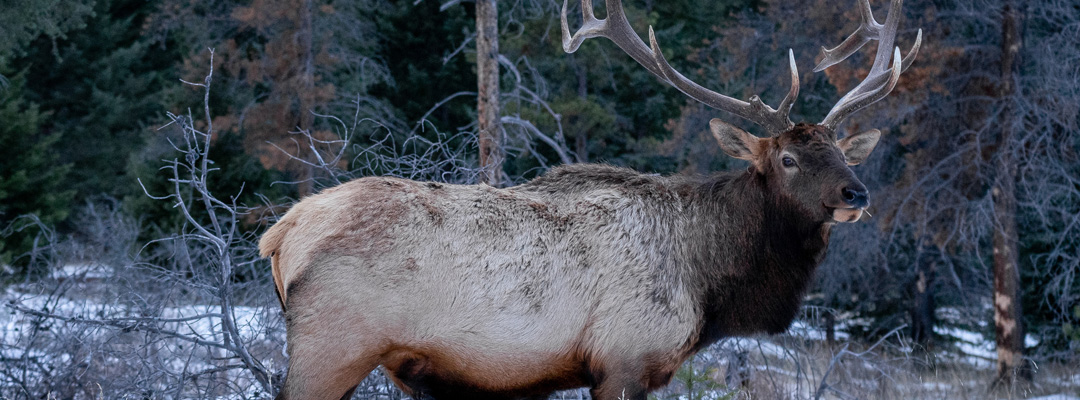
Interested in hunting Manitoba Elk?
Manitoba Elk hunts are limited in tag offerings and are impossible to draw a tag unless you are a resident of the Manitoba region. If you are a serious collector, this species is a must for the hunter, cross breed of this species are 75% Manitoban. Be sure to book way in advance to get a chance to harvest one of these rare bulls that are in limited numbers.
Where can the Manitoba Elk be found?
Manitoba Elk are named after the Canadian Province of Manitoba, where these elk have a sound presence that spans further south into North Dakota as well. The preferred habitats of the Manitoba elk are the elevated forests and meadowlands in which they find themselves. Easily identifiable through their fur coat that contrasts with other subspecies of elk, typically being a darker shade of brown in accordance to gender, season, along with location, the Manitoba elk maintain a more medium stature weighing an average of 600 to 770 pounds and measuring 7 to 8-feet in length. The bulls have large antlers that swoop backwards. In addition, they are naturally good swimmers and have the ability to maintain a speed of up to 45 mph for shorter distances, 29 mph at a steadier pace; this depiction further exemplifies their renowned genetics known far and wide.

When does rutting season begin for the Manitoba Elk?
Similar to other subspecies of elk, the Manitoba Elk adhere to a rutting season that begins in late August, peaks in September, and ends in October. The bugling that takes part amongst the bulls has been defined as something of a “prehistoric sound” that is heard for many miles. Bulls acquire harems of about 5 to 15 adult cows, and to each cow, they will typically birth one calf after a gestation period of 8 months. Calves will soon begin feeding on similar vegetation as their parents, being herbivores and known grass-grazers.

What does the diet of a Manitoba Elk consist of?
A diet of grasses, forbs, and lichens satiates the Manitoba elk. Being primarily forest dwellers, the Manitoba elk are able to find the sustenance that they require, even as the seasons change, all around them. With the changing seasons, however, the Manitoba elk will migrate down towards the valleys in order to avoid heavy snowfall in the winter. Because an excess of snow hinders the mobility of the elk, they can fall victim to one of their known predators, which is the grey wolf. Nonetheless, the Manitoba Elk greatly demonstrate reliance and a strong aptitude when surviving the great outdoors.
